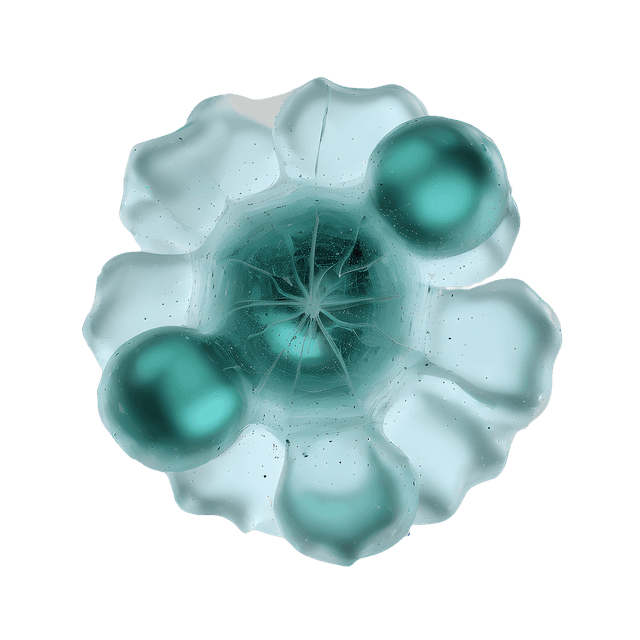Chickenpox and shingles?
Can I get shingles if I had chicken pox? Can I get chickenpox from someone who has shingles? The questions about these diseases are common and shingles is becoming more and more common, but how is it connected?
Chickenpox is a highly contagious disease that usually occurs in children. It manifests as red, itchy blisters, accompanied by fever, headache and fatigue. Shingles, which mainly affects people over the age of 50, presents as a painful, red rash. In rare cases, the disease can become long-lasting and require treatment.
The relationship between chickenpox and shingles
Both chickenpox and shingles are caused by the same virus, the varicella-zoster virus. If you have had chickenpox, the risk of later being affected by shingles, a reactivation of the dormant virus, increases.
Can I get shingles if I had chicken pox?
Shingles can be passed to someone who hasn't had chickenpox, but you can't get shingles from someone with chickenpox. Vaccination against chickenpox significantly reduces the risk of shingles compared to having had chickenpox.
It is crucial to remember that you can only get shingles if you have already had chickenpox or are vaccinated against chickenpox. The risk of shingles is significantly reduced by vaccination, which underlines the importance of getting vaccinated to protect against both chickenpox and shingles. You can also carry out an immunity test that measures your antibodies to find out if you have had the disease and the concentration of antibodies.
Symptoms and complaints
Chickenpox usually starts with a mild to moderate fever and body aches. After a few days, an itchy rash appears in the form of red dots that quickly develop into blisters. The rash usually first appears on the trunk and then spreads to the face, scalp and the rest of the body. The itching can be very bothersome and sometimes coughing can also occur if the blisters are in the mucous membranes of the trachea. The amount of blisters can vary from person to person, and new blisters may continue to appear for about a week. Over time, the contents of the blisters become cloudy and they dry out to form crusts.
Complications can occur if the blisters become infected by skin bacteria, such as staphylococci. A rarer but serious complication is pneumonia, which can be very troublesome. In some people, meningitis or encephalitis may also occur. It is particularly dangerous if chickenpox affects people with a weakened immune system or if a newborn baby is infected immediately after birth.
Paths of transmission and incubation period
Chickenpox is extremely contagious and spreads mainly through the air around the sick person. Contagiousness is already high a few to a few days before the rash appears and remains as long as new blisters appear. It is also possible to become infected through direct contact with wound fluid from the blisters. The incubation period for chickenpox is usually between 10 and 21 days, but most often 14-16 days.
How contagious is shingles?
Shingles is contagious, but the risk of infection is lower compared to chickenpox. The infection occurs through contact with blisters from an active shingles infection. People who have not had chickenpox and come into contact with shingles can get chickenpox instead of shingles. To reduce the risk of transmission and facilitate healing, people with shingles should avoid direct contact with people who have not had chickenpox or who have a weakened immune system. Covering the shingles rash and following good hand hygiene is also important to reduce the spread of infection.
Treatment and Diagnostics
For most children, chicken pox is a mild illness that heals on its own within one to two weeks. Medical treatment is rarely necessary for the child's symptoms. However, the itching can be relieved with the help of antipruritic agents. If the blisters become infected, it may be appropriate to use antibiotics to fight bacterial infections.
Adults who get chickenpox are at greater risk of serious complications and should therefore seek medical help. They can be treated with antiviral agents and/or immunoglobulin to reduce the risks of a severe course of the disease. The diagnosis is usually made based on the typical clinical symptoms, but it can also be confirmed by detecting the virus from the fluid of the blisters or by finding virus-specific antibodies in blood samples.
More details about shingles
Shingles, or herpes zoster, is a disease caused by reactivation of the varicella-zoster virus in people who have previously had chickenpox. Symptoms include painful rashes and blisters that usually appear on one side of the body, following the spread of a specific nerve pathway. Initially, fever and mild general symptoms may occur. The rashes are characteristic and can be very painful. Sometimes shingles can affect the eyes and in these cases hospital care is required.
The blisters dry up and crust over within a few weeks, but the pain may persist for a long time after the rash has healed. Shingles can also be complicated by a bacterial infection in the blisters.
Treatment and diagnostics
In order to relieve the symptoms and prevent complications, antiviral drugs can be used in the treatment of shingles. However, it is important that the treatment is started early in the course of the disease in order to be effective. The diagnosis is usually made by observing the typical clinical symptoms, but if necessary, laboratory tests can be used to confirm the presence of the virus.
Prevention measures for shingles
To prevent shingles and reduce the risk of complications, it is important to consider various measures. The most effective method is vaccination, especially for people over 50 years of age. A strong immune system, maintained through healthy diet and regular exercise, can also help prevent shingles. Avoid direct contact with shingles rash and follow good hand hygiene to minimize the risk of transmission. In case of early symptoms, it is important to seek medical attention for prompt treatment. Extra care should be taken for people with compromised immune systems, and following your doctor's advice can help facilitate healing and reduce the risk of long-term complications.
Test your antibodies
Testing for IgM and IgG antibodies against the varicella-zoster virus (VZV), which causes chickenpox and shingles, is important for several reasons. IgM antibodies indicate a recent infection and can help determine whether a person has chickenpox or shingles. On the other hand, IgG antibodies represent a previous immune response and can provide information about a person's immunity to the virus. These tests are particularly useful for confirming diagnoses, monitoring immunity levels, and guiding vaccination schedules to prevent or minimize the risk of shingles. Here you will find a complete chicken pox test for analysis of both IgM and IgG antibodies Chicken pox and shingles test
Same virus but two different diseases
Chickenpox and shingles are two diseases caused by the varicella-zoster virus. Chickenpox is a common disease that mostly affects children and is characterized by fever and an itchy rash. After having chickenpox, the virus can lie dormant in the body and later cause shingles, which is characterized by painful rashes and blisters along a specific nerve pathway.
Both chickenpox and shingles can be treated with antiviral drugs to relieve symptoms and reduce the risk of complications. Vaccination is the most effective method of preventing chickenpox and is recommended for children and people who are not immune. By taking hygiene measures and avoiding direct contact, the spread of chickenpox can be minimised.
The most important thing is to pay attention to symptoms and seek medical help if necessary. If you suspect that you or your child has chickenpox or shingles, contact a health center or doctor for advice and possible treatment.























